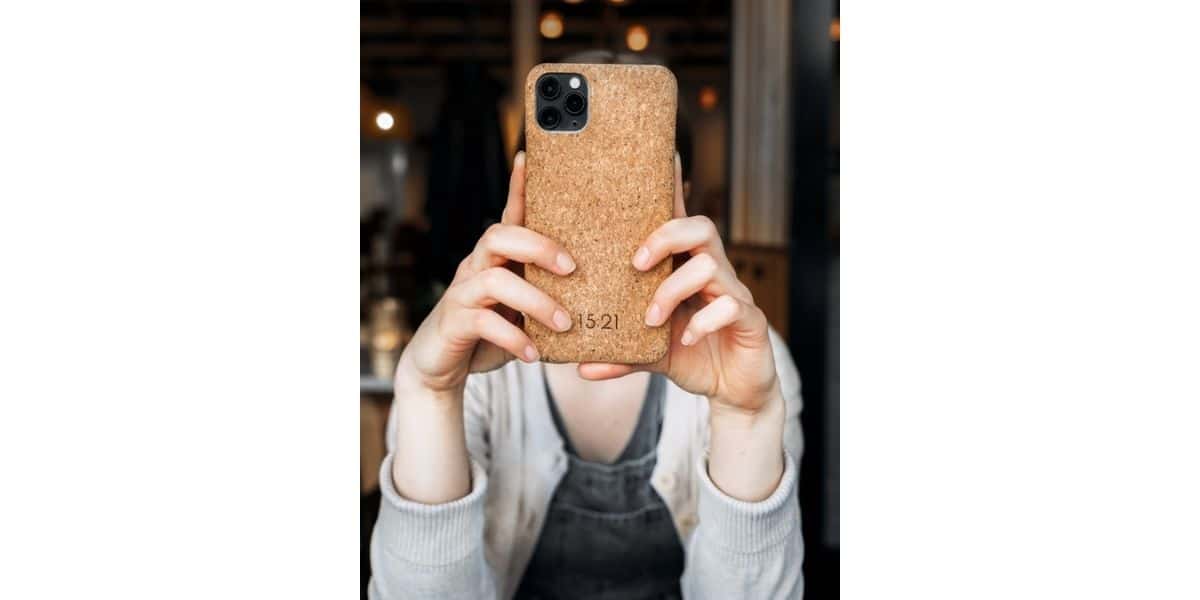We may all have been underestimating the importance of the simple cork. The cork bark made to use traditional corks used in wine bottles comes from cork trees. Cork trees grow in cork forests that thrive with biodiversity, and they’re not cut down to harvest the cork bark. Instead, the cork bark is gathered by hand, and the cork trees are unharmed.

I’ve long seen eco-friendly products and flooring made out of cork bark. However, I didn’t understand know how significant its impact was on the forests it grows in until Fredrik Stenvinkel, the CEO and founder of the Swedish company 15:21 that sells phone cases made from cork bark, explained it to me. So I asked Fredrik to explain why cork bark is an eco-friendly material and why products made from cork bark help keep cork tree forests from being cut down. My Q&A with Fredrik is below.
Cork is made by stripping the bark of the cork oak – which regenerates naturally within nine years.
90% of the corks are harvested in the rural parts of Portugal.
The vast cork forests of Portugal are teeming with life (second only to the Amazon rain forests in terms of biodiversity). The cork oaks are working as natural defenders from forest fires and as a protective barrier against fire and heat. This protection extends to the forest itself and the animals within it. In fact, the scientific name for this species of tree is pyrophytes – literally meaning “fire plants”.
Cork is gathered by removing the bark (always by hand to avoid any damage to the actual tree). Cork grows au natural and with zero input: no pesticides, no artificial application of water or pruning. It’s a labor of love and patience as it takes roughly 25 years for a cork oak to deliver its first harvest and it is mandatory by Portugal law to leave oaks while regenerating. This means that demand serves as a natural preserver for a huge area containing Portugal’s vast cork forests. With an increased demand for cork, more trees are planted and the forests are protected and nourished.
The production of cork is the only sustainable forestry around. Increased production leads to more trees planted and a protected and nourished and protected forest.
For one simple reason – the more cork that is being produced, the better it is for the environment.
With the introduction of plastic “corks” and metal screw caps in the bottle industry, the demand for natural cork has seen a decline. The reduction in demand has resulted in tragic deforestation of the Portuguese cork forest, as industries look to other crops with higher economic returns. This is bad news for the great variety of life making up the vibrant ecosystems around the cork forests and the people living in the area.
We all know trees store carbon, but this is the cork oak’s superpower. A harvested oak captures up to five times more CO2 while regenerating and this has accumulated in great effect.
Here’s a “did you know?” for your next cocktail party: It is estimated that Portugal’s cork industry annually absorbs 4.8 million tonnes of CO2 – equivalent to 5% of Portugal’s total carbon dioxide emissions.
By purchasing cork accessories, you support the cork industry and help fill the gap in demand created by the plastic cork and metal screw cap! Also, let’s not forget that cork bark is natural, recyclable, decomposes naturally, and comes from a sustainable source without cutting one single tree. So, pop a cork and save the forest!
We are on a mission to create new commercial products using cork bark in order to restore the demand for this truly sustainable material. The concept behind 15:21 is about combining Scandinavian simplicity with nature’s own aesthetics, great, practical functionality, and a production method that actually gives back to nature, instead of exploiting it.
Now that you understand why cork bark is such a great material, it’s time to start buying more products made with cork bark!
